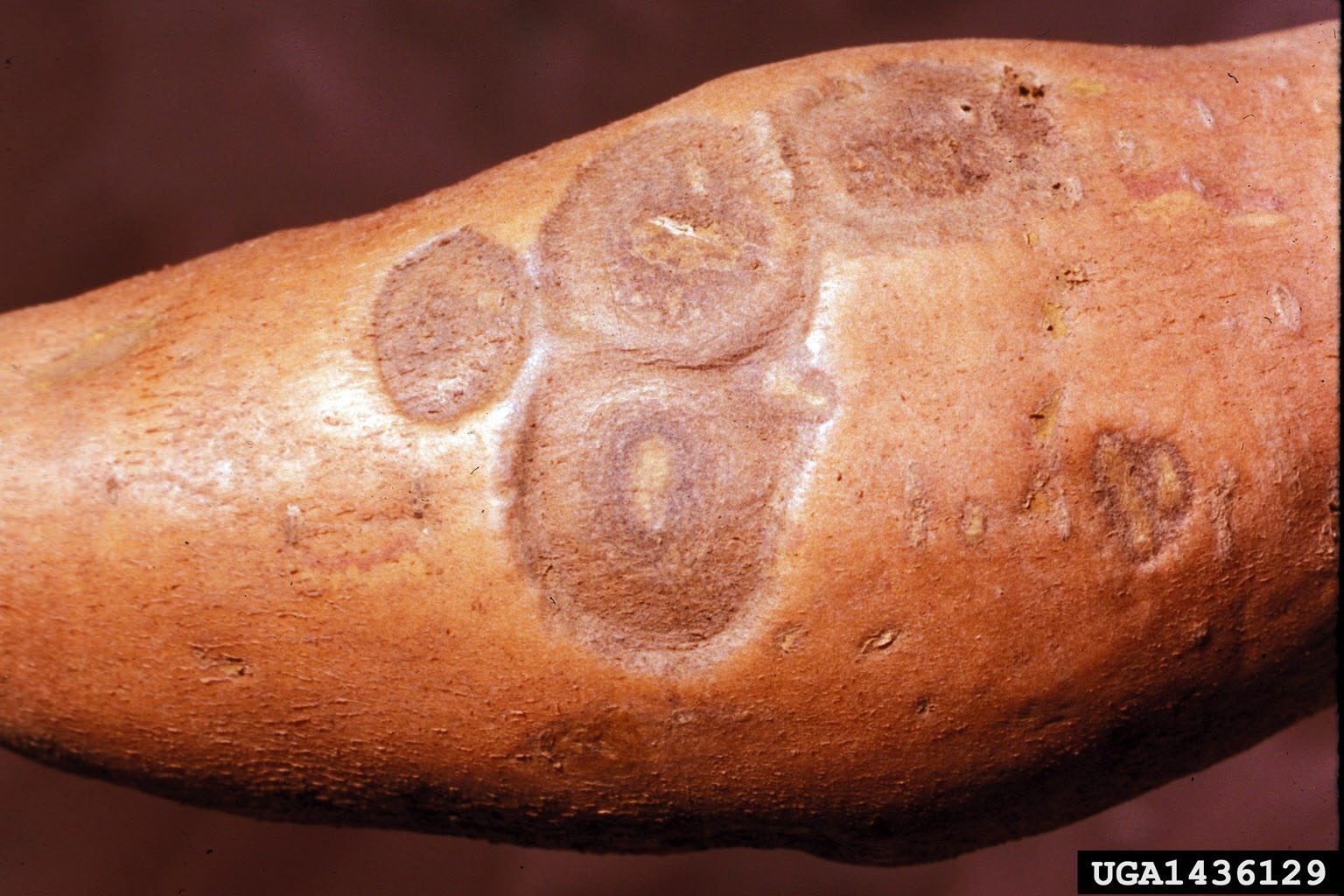What Is Sweet Potato Pox : Learn About Soil Rot Of Sweet Potatoes


If your sweet potato crop has black necrotic lesions, it may be pox of sweet potato. What is sweet potato pox? This is a serious commercial crop disease that is also known as soil rot. Soil rot of sweet potatoes occurs in soil, but the disease progresses when roots are stored. In fields that have become infected, planting cannot occur for many years. This leads to economic loss and reduced yields. Know the signs and symptoms of this disease to prevent its spread.
Sweet Potato Soil Rot Info
Sweet potatoes are a high source of Vitamins A and C, and are one of the largest crops in the southern United States. China produces half of all the sweet potatoes for global consumption. The root has become popular as an alternative to traditional potatoes because of the high nutrient and fiber content. Diseases of sweet potatoes, such as pox, cause millions of dollars in economic losses. In the home garden, such infections can render the soil unusable. Good sanitation practices can help prevent sweet potatoes with soil rot. Above ground signs of infection are yellowing and wilting of plants. In extreme cases, the plants may even die or fail to produce tubers. The tubers themselves develop black crusty lesions, become distorted and have dents in places. The fibrous feeder roots will rot at the ends, interrupting plant uptake. The underground stems will also blacken and turn soft. Sweet potatoes with soil rot have distinct corky lesions. If the disease progresses, tubers will become inedible and plants will die. The pathogen that causes all this trouble is Streptomyces ipomoea.
Conditions for Pox of Sweet Potato
Once we answer the question, what is sweet potato pox, we need to know when it occurs and how to prevent it. The most common conditions that promote the disease are a rise in soil pH above 5.2 and grassy, light, dry soils. The pathogen survives for years in soil and also infects weeds in the morning glory family. The pathogen can spread from field to field on contaminated equipment. It can also spread when infected tubers are used as transplants to start new plants. The disease can even survive on stored sweet potatoes and infect a field if used later as seed.
Preventing Sweet Potato Pox
Soil rot of sweet potatoes can be prevented with some careful measures and tricks. The easiest way to avoid contaminated soil is through good sanitation practices. Decontaminate all hand and mechanical tools before moving into another field. Even soil or storage boxes can harbor the disease. Crop rotation can help prevent the movement of the pathogen, as can fumigating soil. Probably the best method of control is to plant resistant varieties of sweet potato. These might be Covington, Hernandez, and Carolina Bunch. Checking soil pH can also be beneficial where management can be obtained to keep pH from getting too acidic. Incorporate elemental sulfur in soil that is above a 5.2 pH.
Sign up for the Gardening Know How newsletter today and receive a free copy of our e-book "How to Grow Delicious Tomatoes".

Bonnie Grant is a professional landscaper with a Certification in Urban Gardening. She has been gardening and writing for 15 years. A former professional chef, she has a passion for edible landscaping.